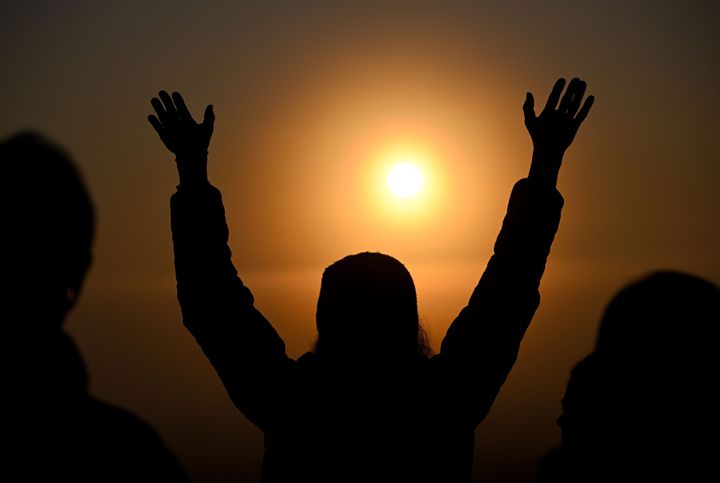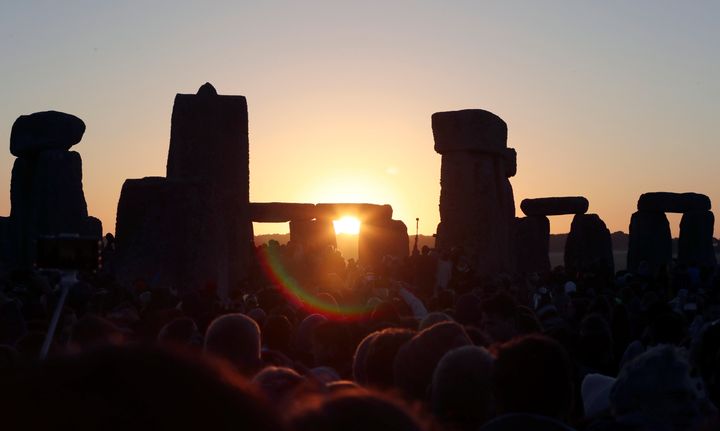
Today is the summer solstice, and people all around the Northern Hemisphere will be honouring the celestial occasion.
But where did the celebration come from and why is it so important?
What is the summer solstice?
The summer solstice is the longest day of the year, when the sun is at the highest point in the sky, and closest to the Northern Hemisphere – meaning it’s also the shortest night for 90% of the human population living there.
For those in the Southern Hemisphere, it’s the shortest day of the year because they’re furthest away from the sun.
The word solstice comes from the Latin words, “sol” for sun and “stitium” for still or stopped.
The annual occasion occurs when the Earth’s axis is tilted at an angle of 23.5 degrees compared to its orbit around the sun.
This solstice usually falls between June 20 and June 22, although this may differ according to the time zone and the year.
In the build-up to the summer event, countries close to the most northern point of the planet – Alaska, Canada, Greenland and Scandinavia, will have almost 24 hours of sunlight a day. Antarctic though, will have no light at all.
Six months after the summer solstice, there’s the winter equivalent (December 21). In between, there’s the spring and autumn equinoxes – when the sun crosses the equator’s path and is perfectly between the two hemispheres.
For astronomers, these four events are used to herald in a new season, meaning today’s summer solstice is, for them, the official start of summer.

What are the timings of the summer solstice?
Celebrations around some sites (like Stonehenge) began at 7pm on Tuesday and ended at 8am on Wednesday.
In terms of the sun’s activity, though, it officially rose at 4.43am (BST) and will set at 21.23pm (BST) on Wednesday evening.
From Thursday onwards, the number of daylight hours will start to reduce consistently until we get to December 21 – the winter solstice.
Why is Stonehenge linked to the solstice?
A World Heritage Site built on the Salisbury Plain in stages dating back to 5,000 years ago, Stonehenge is known all around the world.
Some stones are thought to have been erected back in 2,500 BC, although a lot of it is still shrouded in mystery – where did the stones come from and what are they for?
According to History.com, it may have been a coronation site for Danish kings, a Druid temple, a cult centre for healing, an astronomical means of predicting eclipses.
But it’s widely accepted to be a “prehistoric temple [of some kind] aligned with the movements of the sun,” as the English Heritage charity points out, as the stones align with both the summer and winter solstices.
Those lucky enough to travel to the site will see how, in the summer, the sun rises behind the Heel Stone in the northeast part of the horizon, and its first rays reach into the centre of the circle.
Thousands make the pilgrimage to the pagan site to see the sunrise every year – and it’s the one night a year when worshippers can enter the heavily protected stone circle, although sound systems, alcohol, and sleeping bags are not permitted.
Druids, the modern-day spiritualists connected to the ancient Celtic religious order, even perform rituals around the stones in traditional white robes, to honour the cycle of life, death and rebirth.

How is the summer solstice celebrated around the world?
The celestial event has become a cultural cornerstone for societies around the world, having been observed by humans since the stone age.
It has been used to determine agricultural routines, like when to harvest crops, or for festivals with garlands of special flowers to ward off evil spirits, according to History.com.
For nomadic communities, it may indicate it was time to relocate, while for others it served simply as a calendar marker.
Other reports suggest ancient Romans honoured the occasion by celebrating the goddess of the hearth, Vesta, while ancient Greeks would see it as the start of a new year – and celebrate their god of agriculture, Cronus.
Nowadays, it’s honoured with feasts, bonfires, picnics, songs and dance.
In the UK, Glastonbury Festival, not far from Stonehenge, begins on Wednesday, too. Both areas supposedly sit on “ley lines” which are the mystical energy connections across the country, according to Associated Press news agency.